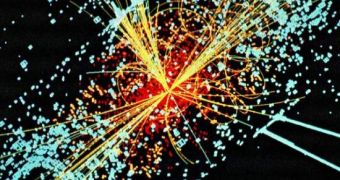The Large Hadron Collider, the largest high-energy physics facility in the world, has been under constant criticism for its potential effects on the planet, with doom sayers arguing that the colliding two beams of particles at 99.99 percent the speed of light, and at temperatures reaching trillions of degrees, could generate a black hole right in the middle of the underground base, located 570 feet (173 meters) beneath the Alps, on the Swiss-French border. Now, some say that the malfunction the device suffered last year is a sign that the project should be abandoned. Researchers from more than 20 countries engaged in the project say that there is absolutely nothing to worry about.
The $8.8 billion project was sponsored mostly by the European Organization for Nuclear Research (CERN), which first advocated the construction of the 27 kilometer-long tunnel under the mountains. The huge central chamber in the middle of the rings is filled with high-precision cameras, ready to capture the first tiny fractions of a millisecond of what happens after two super-accelerated rays of particles collide head-on. Critics fear that the giant dome could also become the place where the black whole forms.
“Absolutely not. The world is constantly bombarded by energetic cosmic rays from the depths of space, some of them inducing particle collisions thousands of times more powerful than those that will be produced by the LHC. If these collisions could create black holes, it would have happened by now,” Penn State professor of physics Stephane Coutu explains.
“The end product of the particle collisions could provide new insight into how particles interact – ultimately, this could explain the outcome of particle processes shortly after the Big Bang from which the universe derives,” he says. “In addition to this experimental data, the LHC could yield practical improvements to our everyday lives. New computing methods to process and analyze these extremely large data sets will have to be developed. These advances may percolate down to applications outside the laboratory.”
He has also told critics that the World Wide Web was developed by the same organization that built the Large Hadron Collider in the Alps, and then has pointed out the obvious – that turned out pretty well for everyone involved. “It is hard to imagine anything more fundamental as an example of human pursuit of pure knowledge,” Coutu adds.

 14 DAY TRIAL //
14 DAY TRIAL //